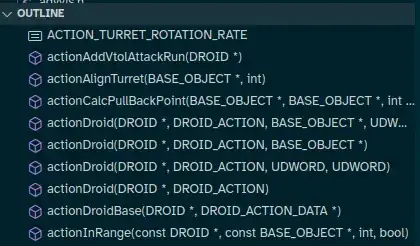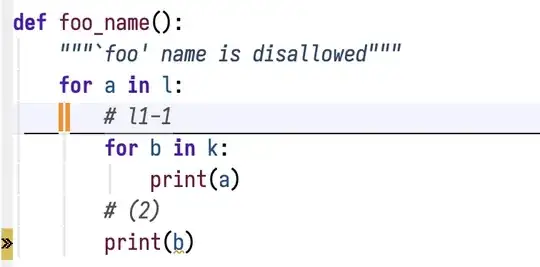when python code block gets larger, it's hard to find the right indentation level
def foo():
for a in l: # l1
# l1-1
for b in k: # l2
print(a)
# (2)
print(b)
# (1)
suppose I have my cursor at the first for (l1 line) , then I would insert a new line at # (1) and move cursor there
similarly from # l2 to # (2)
I found similar solution https://superuser.com/q/1017094/309229 but it navigates only, it doesn't let me create a new line.

